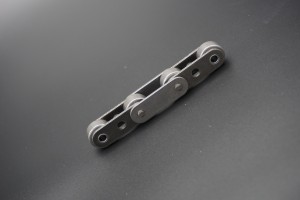When it comes to heavy machinery, precision engineering is critical. Roller chains play an important role in efficiently transmitting power and ensuring smooth operation. While seemingly similar, roller chains can come in different ways, especially 40 and 41 roller chains. In this blog, we’ll delve into the complexity of these two types, decipher their differences, and shed light on their appropriate applications.
Learn about roller chains:
Before diving into the differences, let’s start by establishing a knowledge base about roller chains. Roller chains are primarily used to transmit rotational motion between parallel shafts while carrying heavy loads. They consist of interconnected cylindrical rollers held in place by inner and outer plates.
Basic knowledge of 40 roller chain:
40 Roller Chain, also known as #40 chain, has 1/2″ (12.7 mm) pitch between roller pins. It is equipped with a relatively small roller diameter, providing a higher strength-to-weight ratio. Additionally, this type usually consists of wider plates than 41 roller chain, which provides higher tensile strength.
41 Complexity of roller chains:
Compared to 40 roller chains, 41 roller chains feature a slightly larger 5/8 inch (15.875 mm) pitch between roller pins. 41 roller chains are primarily designed for applications requiring higher tensile strength and load carrying capacity. Although its rollers are larger in diameter compared to 40 roller chain, it has a slightly higher weight per foot.
Differences and application scenarios:
1. Bearing capacity: Since the pin diameter of the 41 roller chain is larger and the plates are wider, it has enhanced tensile strength and load capacity. Therefore, this variant is preferred for heavy-duty applications involving machinery subject to substantial loads.
2. Precision and Speed: The 40 roller chain has a smaller diameter and less weight per foot for greater precision and flexibility. Therefore, it is often used in machinery that needs to operate at high speeds, where accuracy and precision are critical.
3. Space constraints: 40 roller chains prove to be the best choice when space is limited, especially in compact machinery. Its small pitch allows for a more compact installation, which facilitates efficient use of the available space.
Key considerations:
While understanding the difference between 40 and 41 roller chains is crucial, it is equally important to consider other factors before making a choice. These factors include specific application requirements, operating conditions, expected loads and maintenance procedures. Consulting with an experienced professional or reputable supplier will help determine the most suitable chain for a particular scenario.
Deciphering the difference between 40 and 41 roller chains brings us one step closer to ensuring optimal performance of heavy machinery. Whether it’s a delicate balance of speed and precision or meeting a powerful load, choosing the right type of chain is critical. Understanding technical nuances and specific application needs will allow engineers and decision makers to make informed choices that will contribute to the seamless operation of industrial machinery.
Post time: Aug-10-2023

